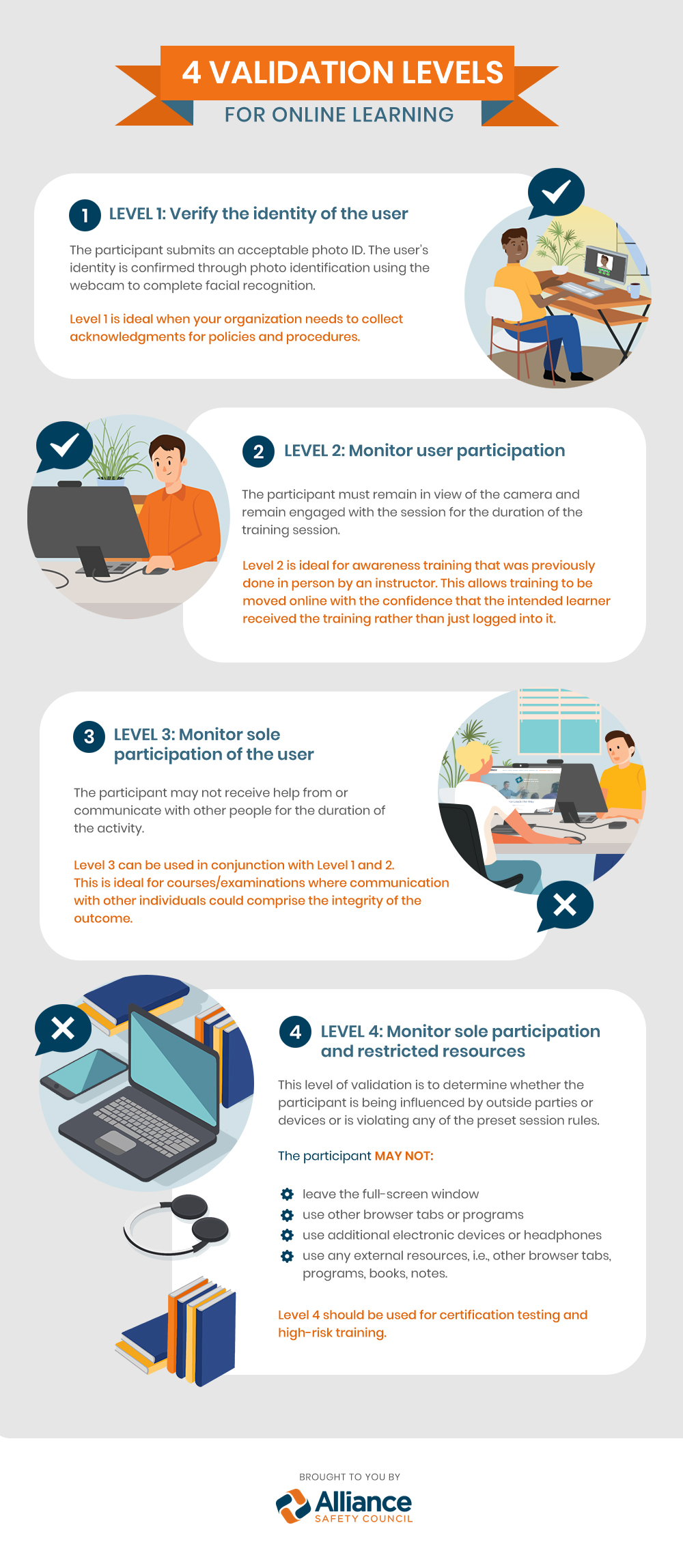Many organizations, education and testing centers, schools and certifying bodies are shifting to online training. Safety measures during the pandemic accelerated this move, but cost effectiveness and efficiency reinforce the decision as a long-term practice. Organizations need to protect the integrity of their online training by confirming learner identity, verifying participation and minimizing unethical activities to comply with the standards, regulations and legal expectations associated with various industry organizations.
Therefore, it is vital to verify that the person completing online training is who they say they are and that they participate as intended.
There are four levels of validation for online learning:
The participant submits an acceptable photo ID. The user’s identity is confirmed through photo identification using the webcam to complete facial recognition.
Level 1 is ideal when your organization needs to collect acknowledgments for policies and procedures.
The participant must remain in view of the camera and remain engaged with the session for the duration of the training session.
Level 2 is ideal for awareness training that was previously done in person by an instructor. This allows training such as orientations and/or training without a comprehensive examination to be moved online with the confidence that the intended learner received the training rather than just logged into it.
The participant may not receive help from or communicate with other people for the duration of the activity.
Level 3 can be used in conjunction with Level 1 and 2. This is ideal for courses/examinations where communication with other individuals could comprise the integrity of the outcome. For instance, the learner may be monitored for participation throughout the course (level 2) but be notified of a stricter participation monitoring rule for the exam (level 3).
This level of validation is to determine whether the participant is being influenced by outside parties or devices, or is violating any of the preset session rules.
Regulations in this level of validation include:
Level 4 should be used for certification testing and high-risk training.
With proper identity verification and participation monitoring, organizations and training institutes can now safely enjoy the financial and efficiency benefits of online learning, without sacrificing the integrity of their training.
Want to learn more? Alliance Safety Council will be hosting a webinar on the 23rd of September. Click here to register.
